Learn the best ways to combine the two techniques for best results
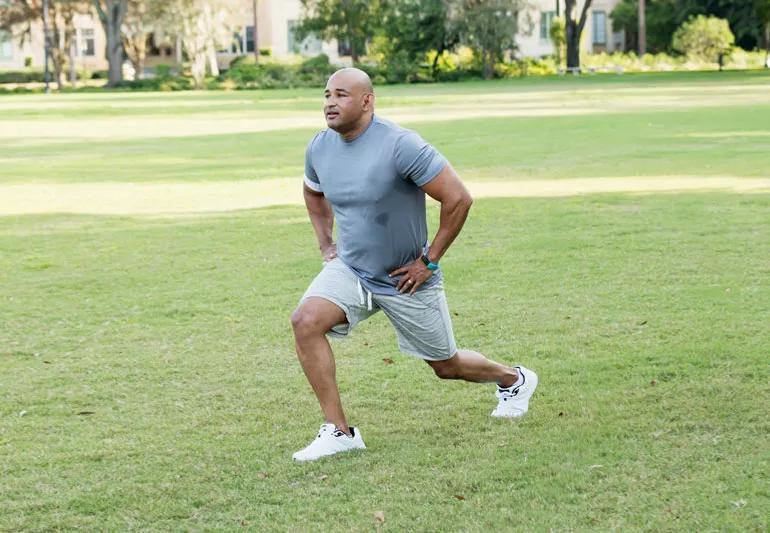
It’s no secret that stretching is an important part of exercise, ensuring your body is loose and ready for the upcoming activity. Stretching also helps overall performance and prevents injuries during whatever activity you choose to do. But are you up to speed on what type of stretching is best?
Advertisement
Cleveland Clinic is a non-profit academic medical center. Advertising on our site helps support our mission. We do not endorse non-Cleveland Clinic products or services. Policy
Becoming mainstream over the past decade, the latest recommendations have evolved, emphasizing the practice of dynamic stretching as preferable to static stretching.
“We always talk about warming up and cooling down in relation to exercise,” says Anne Rex, DO. “Dynamic stretching is a great addition to the warm-up process and pre-exercise routine.”
So what, exactly, is dynamic stretching and what’s the best way to incorporate it into your routine? We spoke with Dr. Rex about the ins and outs of the best ways to stretch and what it means for your body.
Dynamic stretching, explains Dr. Rex, is actively moving joints and muscles with sports-specific motions for around 10-to-12 repetitions, targeting certain muscle groups.
“Dynamic stretching mimics the activity or the movement that you’re going to do in whatever sport or activity you’re about to start,” Dr. Rex says. “It helps rehearse the movement patterns so the muscles tend to get excited a little bit earlier and faster which can help improve power and increase coordination.”
In fact, dynamic stretching has been shown to acutely increase power, sprint, jump and improve performance.
“In terms of warming, when you’re actively moving the muscles, you’re improving blood flow circulation,” says Dr. Rex. “It increases muscle temperature, which then reduces the resistance and increases the flexibility.”
Advertisement
The growing popularity of dynamic stretching sets it in contrast to static stretching. While dynamic stretching is based on movement, static stretching involves moving a joint as far as it can go and holding it for a length of time, typically 30 to 90 seconds.
According to Dr. Rex, static stretching fell out of favor as a warm-up routine because research found that static stretching induced some detrimental effects, like reducing maximal strength, power and performance after a single bout of a static stretch.
“When you’re static stretching,” she notes, “the muscles aren’t warmed up. It’s really more of a relaxation movement. So the better recommendation would be to do static stretching as part of the cool down process instead.”
That said, Dr. Rex also notes that static stretching has earned something of a bad reputation about being used prior to activity. “But the most recent studies say that it’s still a very effective way to stretch and increase the range of motion of a joint and it can be used in a short duration stretch as part of a complete dynamic warm-up.”
“There’s still absolutely a role for static stretching,” she says. “But the longer you stretch, the more there’s going to be a negative impact on performance. So if it’s part of a complete dynamic warm-up, you’d hold the stretch for around 15 to 30 seconds, not 60 to 90 seconds.”
Static stretching after exercise, she says, can also help prevent post-workout stiffness because it can help put muscles back at their pre-exercise length.
There are a wide variety of dynamic stretches you can try, especially if you’re looking to warm up for a run.
Other examples of dynamic stretches include arm circles and shoulder rolls which are often performed by swimmers.
One thing Dr. Rex says not to do, though, is combining dynamic stretching with bouncing or ballistic motions. “Whereas dynamic stretching is done in a controlled manner with 10-to-12 reps in a sport-specific motion, ballistic motions create greater tension in the muscle because the muscle is uncontrolled going through a greater range of motion so there’s a greater risk of injury.”
You want to avoid bouncing while you stretch. That applies to static stretching, too, she says, such as when you might stretch down to touch your toes or when you do a leg butterfly stretch. That kind of uncontrolled movement, versus the controlled movement of dynamic stretching, can cause injuries.
Advertisement
Advertisement
Learn more about our editorial process.
Advertisement

Having a partner help you stretch can prevent injury and lead to an increased range of motion

Simply contracting certain muscles provides a good stretch to other areas of your body
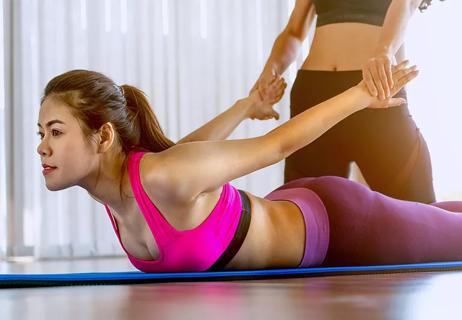
Relax into this form of stretching while a prop or partner assists you

Reduce pain and stiffness by stretching your body throughout the day
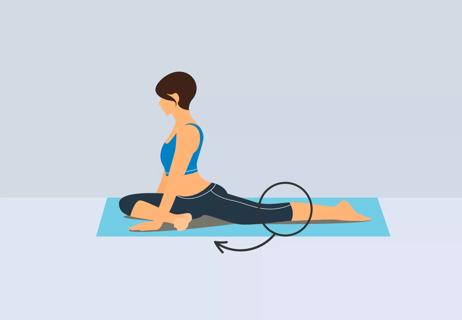
This extreme stretch can help build hip mobility and address pain in your back, knees and feet
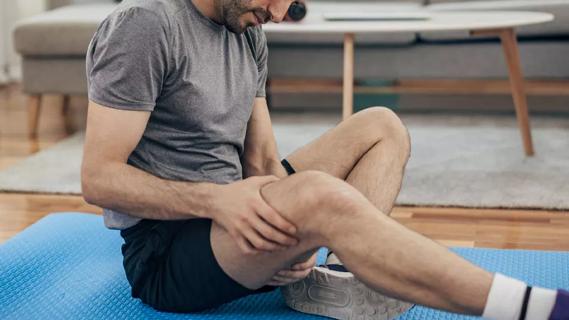
Stretching, heating pads and massage guns can provide quick relief

Wrist flexor and extensor stretches are the best stretches for wrist pain
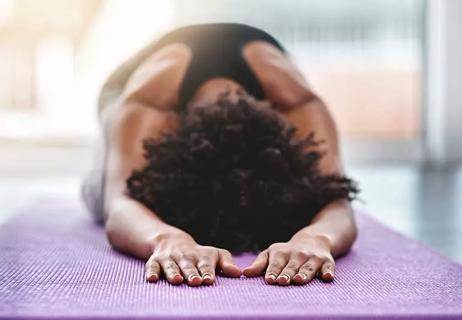
When your lower back locks up, walking and stretching are key

Type 2 diabetes isn’t inevitable with these dietary changes

Applying a hot or cold compress can help with pain